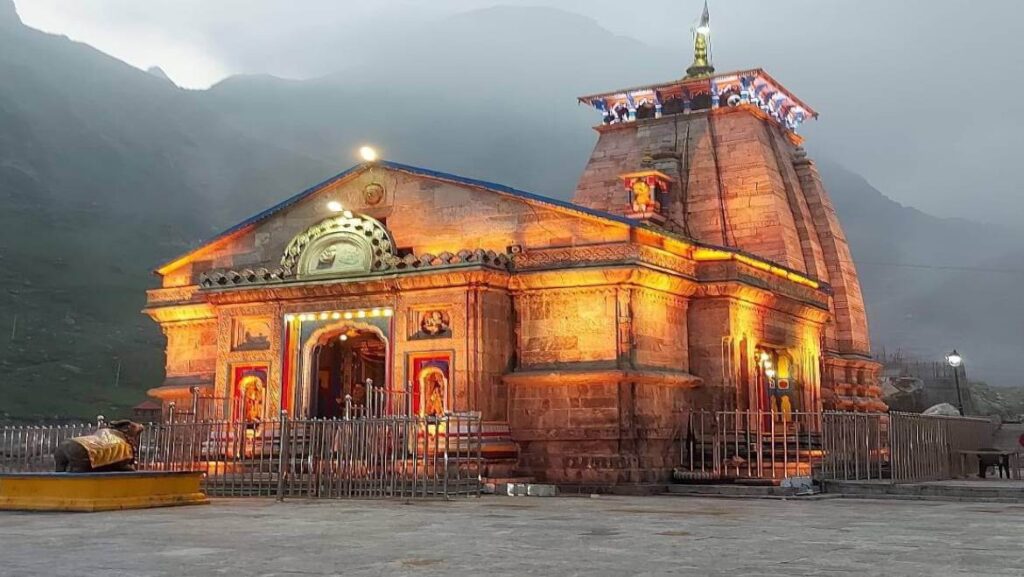Sri Kedarnath Jyotirlinga, Uttrakhand
The 11th Jyotirlinga is the highest of the 12 jyotirlingas, situated at an altitude of over 3,500m in Uttarakhand, at the head of the Mandakini and mythical Saraswati River.
Introduction
One of the first references of Kedarnath is in the Skanda Purana that was written around 7th and 8th century AD. The present structure is believed to have been built by Adi Shankaracharya about 1200 years ago. It stands next to the site of a temple that is said to have been built by the Pandavas.
This has been renovated many times over the centuries.
The Kedarnath temple is built with huge stone slabs over a rectangular platform. There are inscriptions in Pali on the steps. There are figures of various deities and scenes from Hindu mythology on the inner walls. A large statue of Nandi Bull, Shiva’s mount, stands as guard at the entrance.
The Jyotirlinga is in the shape of a conical rock formation inside the temple – Lord Shiva in his Sadashiva form.
Temple Timings: 04.00 am – 09.00 pm
Kedarnath Opening & Closing Dates
Open on 6th May 2022
Close on 26th October 2022
Kedarnath Jyotirlinga Temple opening date depends on auspicious day of ‘Akshay Tritya’ and Maha Shiva Ratri’, according to the calculations by Omkareshwar priests.
In 2022, Kedarnath Dham will open on 6/May 2022 in the morning with special Pooja in the temple.
The opening date of Kedarnath Dham has been declared on Maha Shivaratri and closing date has been set on the day of Bhai Dooj (the day after Diwali), the temple will be closed after Pooja Archana in the morning.
Kedarnath in Winters
In Winters starting from the month of November, there is heavy snowfall in Kedarnath and all the routes are closed. The shrine is also closed for 6 months. The holy statue of Lord Shiva is shifted from Garhwal (Kedarkhand) to Ukhimath and is reinstated at Kedarnath in the first week of May. The doors of Kedarnath Temple thrown open to pilgrims at this time.
History
The legend behind this Kedarnath temple is that after the Mahabharata war, Pandavas performed a penance to purge their sins – of killing their kins. In order to be able to do this, they were advised to seek Lord Shiva’s pardon. They searched and finally, saw Lord Shiva at the spot where the jyotirlinga in Kedarnath is situated today.
It is said that Lord Shiva was not willing to forgive Pandavas for their deceit and sins during the war and hence hid himself. He disguised himself as a bull and disappeared into the ground.
The second Pandava, Bhimasena, tried to pull him out of the ground by tugging at his tail and hind legs. However, Lord Shiva dug himself deeper and only reappeared in parts in different places – the hump in Kedarnath, the arms in Tunganath, the navel and stomach in Madhyamaheshwar, the face in Rudranath, and the hair and head in Kalpeshwar.
Lord Shiva further promised to stay on in the sacred spot as a triangular jyotirlinga. This is why Kedarnath is so famous and revered by devotees.
Related Tours


